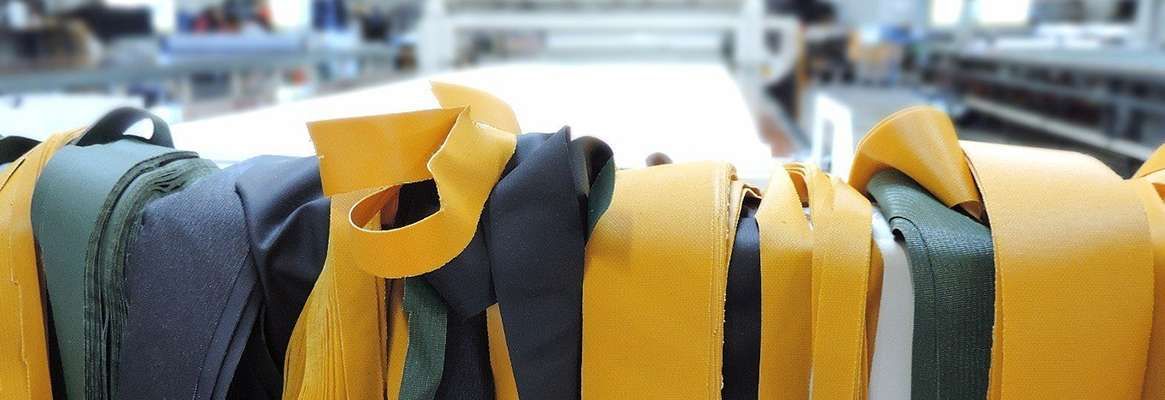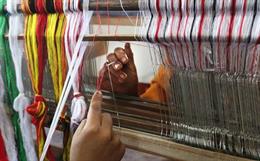Fabricfor use in selected items of apparel must have properties that make itadaptable for various climatic conditions. Protection against cold is dependentupon thermal resistance or thermal insulation of the garment. The presentarticle reviews various factors which determine thermal insulation of garment.
MECHANISM OF BODY HEAT LOSS
Heatcan be lost from the body by conduction, convection, radiation and evaporationof perspiration. Heat loss by conduction occurs when material known to be goodconductors are placed next to the body. The conductor carries the body heat tosurrounding atmosphere where it is dissipated into the air cooling the body.Heat loss by convection occurs when air current move over and around the body.Heat loss by radiation means that heat is given off from the body in the formof rays. This occurs when air temperature is below body temperature. Heat lossby evaporation of perspiration results from a physiological mechanism tocontrol body temperature.
ROLE OF AIR IN THERMAL INSULATION
Textilefibers differ in their ability to conduct heat but it is the thermal resistanceof trapped pockets of air, not the conductivity of fiber which determines thethermal properties of textiles. Greater the ratio of air to the fiber in thefabric structure, the greater the insulation of fabric. Cassie opined that theair is not entrapped but clings to the fiber surface. This fact probablyexplains the excellent insulating property of wool fabrics as wool yarns areopen yarns so expose maximum surface.
Airprovides little resistance to passage of heat by radiation. Fibers do obstructthe flow of radiant heat, some more than the others and a minimum amount offibers must be used to effectively accomplish this. As air movement causes heatloss by convection, total fabric assembly such as to reduce air flow as much aspossible.
Thereare many fabric structures which can trap still pockets of air and so act asinsulators under still air conditions. They may be pile/napped fabrics, milledor quilted fabrics and more flexible knitted and brushed fabrics. Syntheticfibers are crimped to increase the amount of air space within the fabric. Thecrimp prevents the fiber packing tightly in the fabric and so creates pocketsof air.
FABRIC PARAMETERS AFFECTING THERMAL INSULATION
Resultof studies on the thermal properties of fabric has concluded that the thicknessand density of the fabrics are two chief factors which determine the insulationproperty. The thickness of fabric strongly affects amount of heat insulation.In general the greater the fabric thickness, greater the thermal insulation.
It has also been foundthat the thermal insulation is also related to the weight and compressionalproperties of fabric. To make an insulating material effective it should havelow compression set/high resiliency to make the still air entrapped into thematerial.
Marsh has stated that the lesser the area of contact between the fabric and skin, the warmer the fabric. Wool fibers warmth providing property is not only on account of its crimp and curliness, but also because of its elastic nature which enables it to recover from deformation and therefore to maintain little contact with the skin.
The nature of weave also affects thermal insulation property. There is slow increment in the coldness of fabric with increase in the closeness of weave. The warmer materials are produced in twill and crepe constructions.
WIND CHILL
It is the stillness of the air trapped in clothing which gives it the ability to prevent heat from being conducted away from the body. The insulation value depends upon the trapped air remaining still. If wind blows through the garment, fresh cold air replaces the insulating layers and heat is rapidly lost.
Wind chill effect depends upon the temperature as well as the velocity of the wind. In the cold climate consideration of wind chill effect is very important because 80% of heat losses are due to wind chill effect.
To prevent wind from penetrating the clothing and to help trap still air, the garment should be designed to have some close fitting points.
EFFECT OF WATER ON THERMAL INSULATION
Water molecules are much closer together than air molecules so water conducts heat far more rapidly than does air. If a garment becomes wet whether from perspiration or from rain its thermal resistance drops dramatically. As little as 15% moisture can halve the insulation value of clothing.
The transmission of water through a fabric is very critical parameter from comfort point of view. In winter it is possible that water vapour produced by perspiration at the skin can be condensed to the liquid, which may subsequently freeze to ice as the water molecules move towards the cold air at the external surface. If a fabric cannot permit sufficiently rapid disposal of water to occur, perspiration related discomfort may be felt. The movement of water can be increased by either increasing water vapour permeability or enhancing the ability of the fabric to transport liquid water to the surface.
Some of the items of clothing for cold climate are made of two or more layers. Thermal resistance of two layers of fabric is greater than the sum of the resistance of the two fabrics. This is because of the air trapped between the layers. Fabric in garment can be used as free layer, or joined together by stitching or by fusion.
REFERENCES
1. Corbman B P (1985) Textile fiber to fabric 6th ed. McGraw Hill Company, New York
2. Cassie ABD (1956) Journal of Textile Institute, vol. 37
3. Kothari and Anderson (1991) Indian Journal of Fiber and Textile Research, vol. 29
4. Marsh JT (1979) Textile Science B.I. Publication, New Delhi
5. Mathur, Raj and Kasturia (1997) Indian Journal of Fiber and Textile Research, vol.22
6. Rees (1941) Journal of Textile Institute. vol. 32
ABOUT THE AUTHOR:
Dr. Suman Pant is a Professor at the Faculty of Home Science, Banasthali University.







